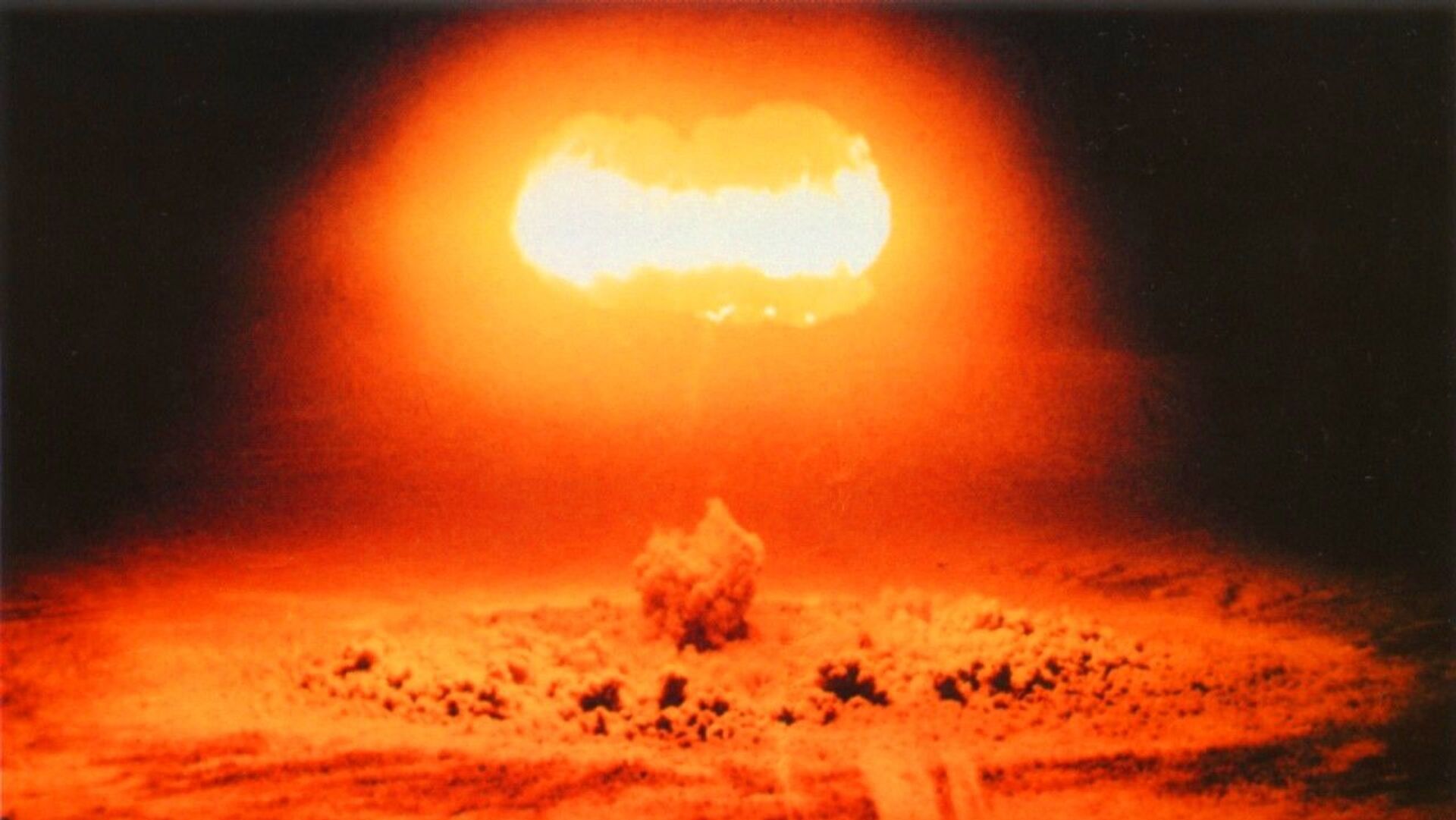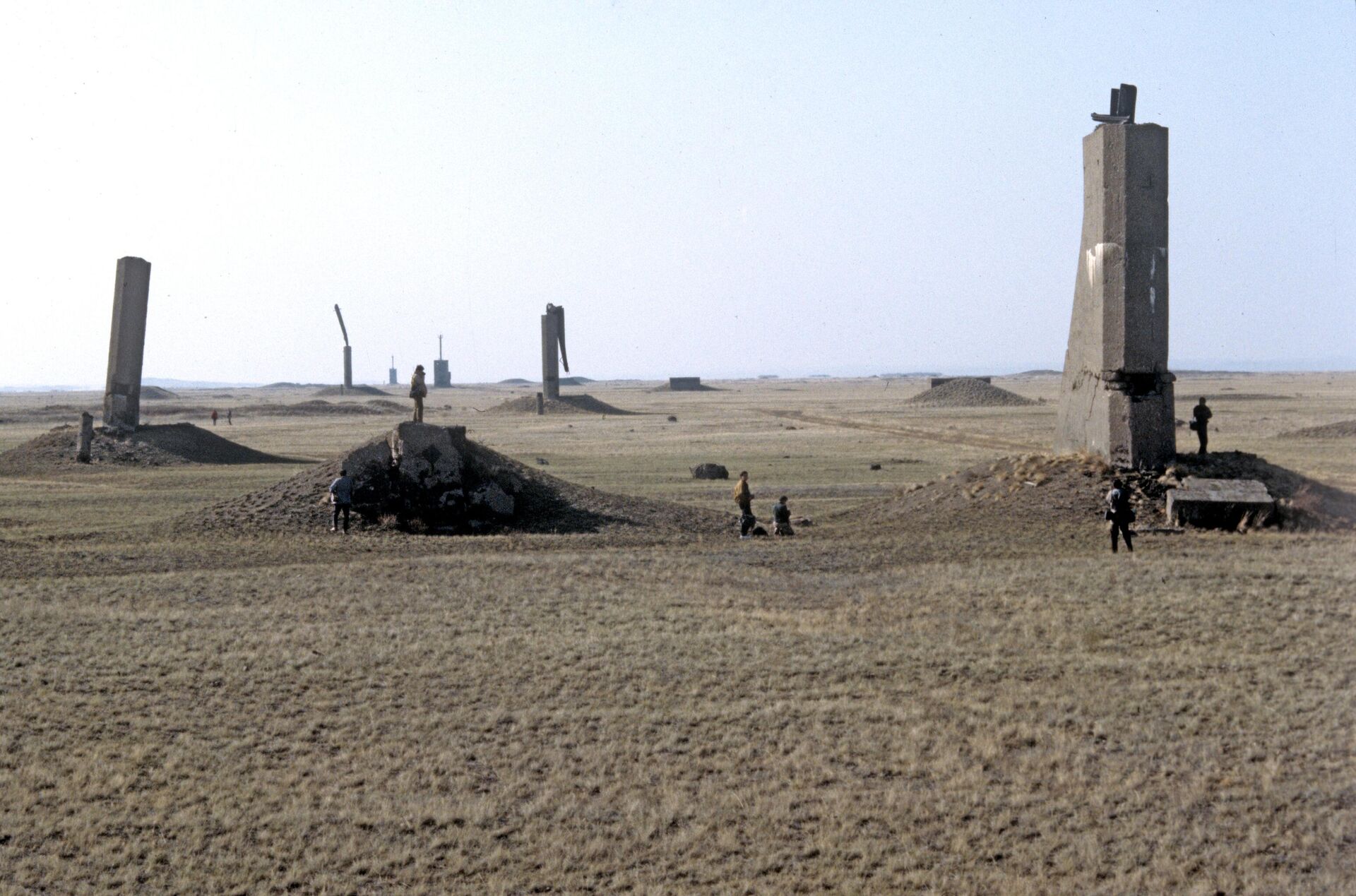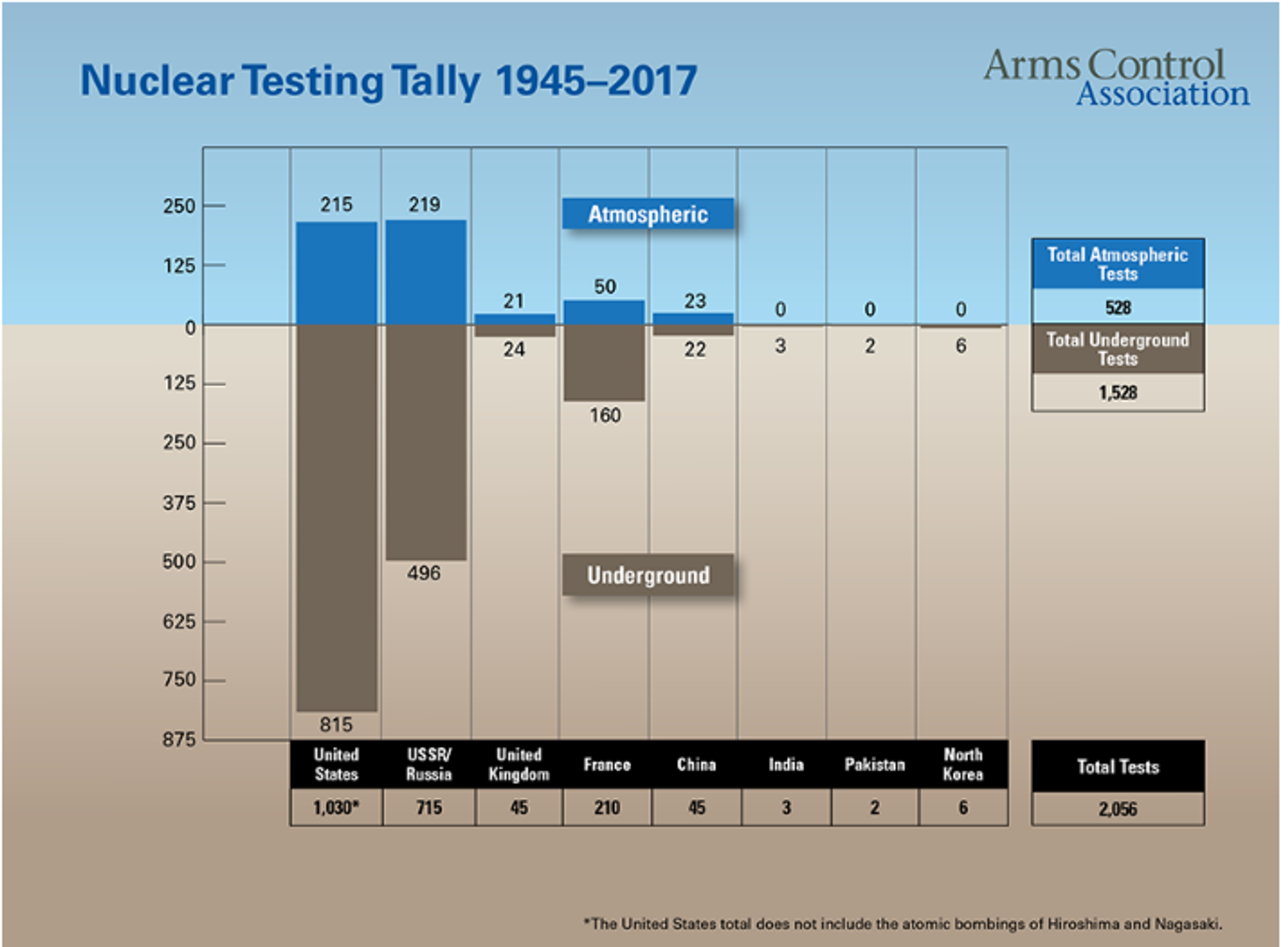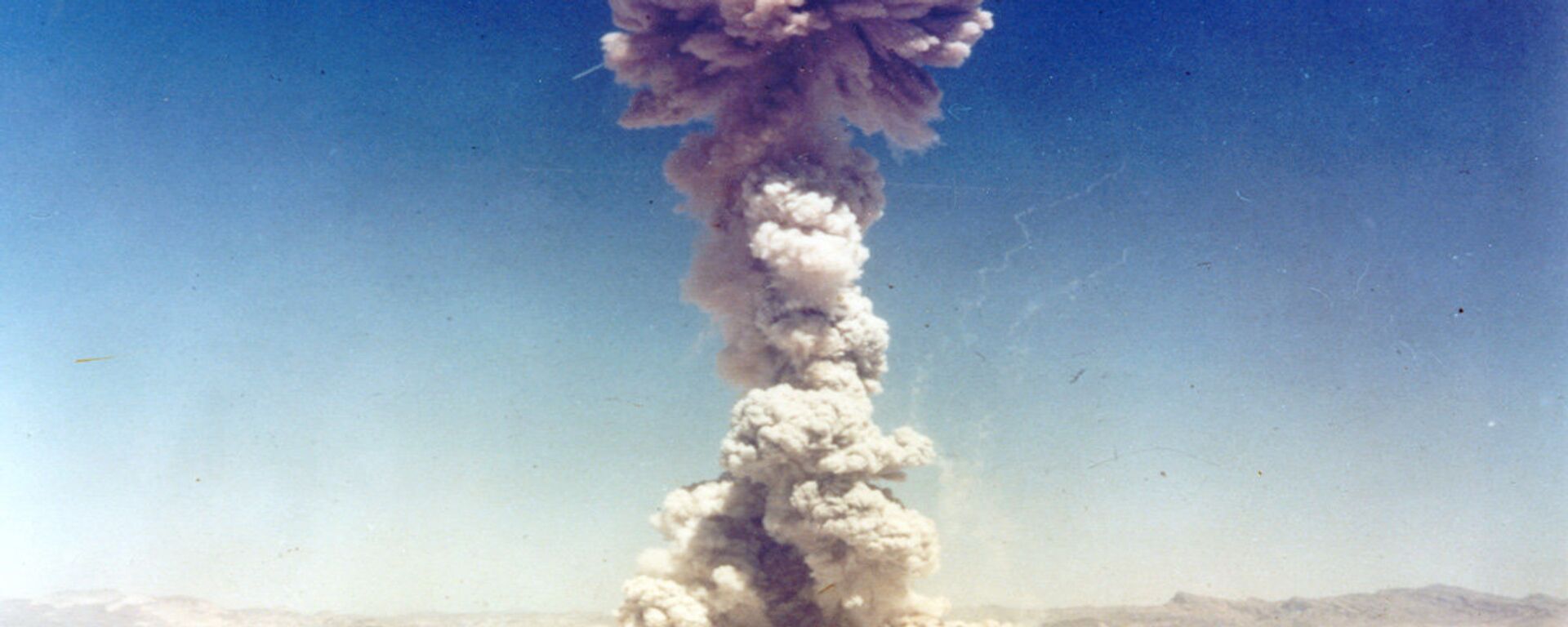https://sputnikglobe.com/20240702/who-is-still-conducting-nuclear-tests-1119219193.html
Who is Still Conducting Nuclear Tests?
Who is Still Conducting Nuclear Tests?
Sputnik International
The Treaty on the Limitation of Underground Nuclear Weapon Tests was signed between the Soviet Union and the US 50 years ago, in July 1974. The Comprehensive Nuclear-Test-Ban Treaty (CTBT), adopted in 1996, never came into force.
2024-07-02T15:51+0000
2024-07-02T15:51+0000
2024-07-02T15:51+0000
world
nuclear tests
comprehensive nuclear-test-ban treaty (ctbt)
russia
us
china
nevada
the united nations (un)
north korea
https://cdn1.img.sputnikglobe.com/img/107660/40/1076604073_0:0:1281:721_1920x0_80_0_0_2e0094bce1b790f9532f967ffd1a17d9.jpg
The Treaty on the Limitation of Underground Nuclear Weapon Tests, also known as the Threshold Test Ban Treaty (TTBT), was signed between the Soviet Union and the US 50 years ago in July 1974.It established a nuclear “threshold” by prohibiting tests with a yield exceeding 150 kilotons (equivalent to 150,000 tons of TNT)August 29 was declared the International Day against Nuclear Tests at a session of the United Nations in 2009.That commemoration was launched on the initiative of Kazakhstan, where on August 29 1991 the Semipalatinsk test site, where Soviet nuclear weapons were tested, was decommissioned.While the Comprehensive Nuclear-Test-Ban Treaty (CTBT) was adopted in 1996, it never came into force.Eight of the 44 countries that had nuclear potential and technology at the time the CTBT was discussed - Egypt, India, Iran, Israel, China, North Korea, Pakistan, and the United States - either did not sign it or signed it but did not ratify it.Russia, one of the first to sign the CTBT, revoked its ratification late in 2023. Russia’s President Vladimir Putin cited the refusal of ratification by the US. Moscow added that this does not mean that it intends to conduct nuclear tests.The US is the only country to have used nuclear weapons in war, detonating two atomic bombs over the Japanese cities of Hiroshima and Nagasaki in the final days of World War II. More than 200,000 people were killed instantly or within a few months of the attacks.Currently, the only limitation that keeps countries from nuclear testing is unilateral moratoriums.Since the first ‘Trinity’ nuclear test by the US on July 16, 1945, more than 2,000 nuclear tests have been conducted by at least eight nations, according to the Arms Control Association.Test sites included atolls of the Pacific, the South Atlantic, Nevada (US), Semipalatinsk in Kazakhstan, Western Australia (UK tests), Algeria (French tests), Lop Nor in China.In order of acquisition, the US, Russia (as successor of the former Soviet Union), the UK, France, and China are the five official nuclear-weapon states (NWS) under the terms of the Treaty on the Non-Proliferation of Nuclear Weapons (NPT). They all carried out their first explosions before the NPT was opened for signature in 1968. The greatest number of tests were carried out by the US (1032) and the USSR (715); fewer tests were carried out by France (210), the UK (45), and China (45).In addition, India, Pakistan, and the DPRK conducted their tests after 1968.The Limited Test Ban Treaty of 1963 prohibits nuclear weapons tests "or any other nuclear explosion" in the atmosphere, in outer space, and under water, signed by the US, UK, and USSR, but not China or France. Over 100 states also joined the document, which stopped short of prohibiting underground testing. Underground explosions account for about 75% of all tests.The UN has warned that some countries may be still conducting nuclear tests in secret.The USsuspended underground tests in 1992 butbegan ‘subcritical’ tests five years later.On October 18, 2023, the US conducted a high-explosive experiment at the Nevada site. It used chemical high explosives and radiotracers in an underground tunnel to “validate new predictive explosive models," according to a National Nuclear Security Administration (NNSA) statement.The test took place on the same day that the State Duma of the Russian Federation adopted the law revoking ratification of the CTBT. On May 14, 2024, the US Department of Energy’s National Nuclear Security Administration said that it had executed a "subcritical experiment" at the Principal Underground Laboratory for Subcritical Experimentation at the Nevada National Security Site. It claimed it was done to collect information to support the effectiveness of US nuclear warheads.Washington argued that the experiment, like all 33 previous US subcritical experiments, was consistent with the zero-yield standard of the Comprehensive Nuclear-Test-Ban Treaty, and the self-imposed moratorium on nuclear explosive testing dated 1992. It claimed the test did not involve a self-sustaining, supercritical chain reaction.Subcritical experiments remain controversial, according to the Arms Control Association, as critics warn they undermine the CTB Treaty by allowing the US to improve the weapons in its nuclear arsenal.
https://sputnikglobe.com/20231006/russias-withdrawal-from-ctbt-does-not-mean-it-plans-to-conduct-nuclear-tests---kremlin-1113980732.html
https://sputnikglobe.com/20240520/russia-closely-monitoring-situation-after-us-nuclear-test-in-nevada-1118538652.html
russia
china
nevada
north korea
Sputnik International
feedback@sputniknews.com
+74956456601
MIA „Rossiya Segodnya“
2024
News
en_EN
Sputnik International
feedback@sputniknews.com
+74956456601
MIA „Rossiya Segodnya“
Sputnik International
feedback@sputniknews.com
+74956456601
MIA „Rossiya Segodnya“
why did the comprehensive nuclear-test-ban treaty never come into force, who is still conducting nuclear tests, what kind of nuclear tests are there, is the us still conducting nuclear tests, what is the ctbt treaty, ratification of the comprehensive nuclear-test-ban treaty, russian president vladimir putin's signing of a bill to to revoke the ratification of ctbt, comprehensive nuclear-test-ban treaty organization, us policy, nuclear tests, nevada nuclear, us subcritical nuclear test, subcritical nuclear us, nuclear detetrence
why did the comprehensive nuclear-test-ban treaty never come into force, who is still conducting nuclear tests, what kind of nuclear tests are there, is the us still conducting nuclear tests, what is the ctbt treaty, ratification of the comprehensive nuclear-test-ban treaty, russian president vladimir putin's signing of a bill to to revoke the ratification of ctbt, comprehensive nuclear-test-ban treaty organization, us policy, nuclear tests, nevada nuclear, us subcritical nuclear test, subcritical nuclear us, nuclear detetrence
Who is Still Conducting Nuclear Tests?
Russian President Vladimir Putin signed a bill to renounce the Comprehensive Nuclear-Test-Ban Treaty (CTBT) last year, citing the US refusal to ratify it. Moscow had previously made it clear that Russia's possible refusal to ratify the CTBT does not mean that it intends to conduct nuclear tests.
The Treaty on the Limitation of Underground Nuclear Weapon Tests, also known as the Threshold Test Ban Treaty (TTBT), was signed between the Soviet Union and the US 50 years ago in July 1974.
It established a nuclear “threshold” by prohibiting tests with a yield exceeding 150 kilotons (equivalent to 150,000 tons of TNT)
August 29 was declared the International Day against Nuclear Tests at a session of the United Nations in 2009.
That commemoration was launched on the initiative of Kazakhstan, where on August 29 1991 the Semipalatinsk test site, where Soviet nuclear weapons were tested, was decommissioned.
While the
Comprehensive Nuclear-Test-Ban Treaty (CTBT) was adopted in 1996,
it never came into force.Eight of the 44 countries that had nuclear potential and technology at the time the CTBT was discussed - Egypt, India, Iran, Israel, China, North Korea, Pakistan, and the United States - either did not sign it or signed it but did not ratify it.
Russia, one of the first to sign the CTBT,
revoked its ratification late in 2023. Russia’s President Vladimir Putin cited the refusal of ratification by the US. Moscow added that this
does not mean that it intends to conduct nuclear tests.6 October 2023, 11:04 GMT
The US is the only country to have used nuclear weapons in war, detonating two atomic bombs over the Japanese cities of Hiroshima and Nagasaki in the final days of World War II. More than 200,000 people were killed instantly or within a few months of the attacks.
Currently, the only limitation that keeps countries from nuclear testing is unilateral moratoriums.
Since the first ‘Trinity’ nuclear test by the US on July 16, 1945, more than 2,000 nuclear tests have been conducted by at least eight nations, according to the Arms Control Association.
Test sites included atolls of the Pacific, the South Atlantic, Nevada (US), Semipalatinsk in Kazakhstan, Western Australia (UK tests), Algeria (French tests), Lop Nor in China.
In order of acquisition, the US, Russia (as successor of the former Soviet Union), the UK, France, and China are the
five official nuclear-weapon states (NWS) under the terms of the Treaty on the Non-Proliferation of Nuclear Weapons (NPT). They all carried out their first explosions before the NPT was opened for signature in 1968. The greatest number of tests were carried out by the US (1032) and the USSR (715); fewer
tests were carried out by France (210), the UK (45),
and China (45).
In addition,
India,
Pakistan, and the DPRK conducted their tests after 1968.
The Limited Test Ban Treaty of 1963 prohibits nuclear weapons tests "or any other nuclear explosion" in the atmosphere, in outer space, and under water, signed by the US, UK, and USSR, but not China or France. Over 100 states also joined the document, which stopped short of prohibiting underground testing. Underground explosions account for about 75% of all tests.
The Russian Federation has never tested nuclear weapons. The USSR conducted its last underground nuclear explosion with a yield of 70 kilotons in 1990 at the
Novaya Zemlya test site.
UK’s last test of reportedly a 11 kiloton Trident nuclear warhead in a nuclear shaft in the Nevada desert, codenamed ‘
Julin Bristol,’ was conducted on November 26, 1991.
Last US nuclear test ‘
Shot Divider’ of Operation Julin took place on September 23, 1992, at the Nevada Test Site.
France conducted its last blast at the Moruroa and Fangataufa Atoll test site in the South Pacific on January 27,1996.
China conducted its last nuclear test on July 29, 1996.
After 1996, ten tests were carried out: two each by India and Pakistan; After explosions in 1998, Delhi and Islamabad imposed moratoriums.
Six tests were reportedly carried out by
the DPRK. North Korea's last explosion was on September 3, 2017, when it stated it had
successfully conducted a test of a hydrogen bomb, with the yield estimated at more than 100 kilotons of TNT.
The UN has warned that some countries may be still conducting
nuclear tests in secret.
The USsuspended underground tests in 1992 butbegan ‘subcritical’ tests five years later.
On October 18, 2023, the US conducted a high-explosive experiment at the Nevada site. It used chemical high explosives and radiotracers in an underground tunnel to “validate new predictive explosive models," according to a National Nuclear Security Administration (NNSA) statement.
The test took place on the same day that the State Duma of the Russian Federation adopted the law revoking ratification of the CTBT.
On May 14, 2024, the US Department of Energy’s National Nuclear Security Administration said that it had executed a "subcritical experiment" at the Principal Underground Laboratory for Subcritical Experimentation at the Nevada National Security Site. It claimed it was done to collect information to support the effectiveness of US nuclear warheads.
Washington argued that the experiment, like all 33 previous US subcritical experiments, was consistent with the zero-yield standard of the Comprehensive Nuclear-Test-Ban Treaty, and the self-imposed moratorium on nuclear explosive testing dated 1992. It claimed the test
did not involve a self-sustaining, supercritical chain reaction.Subcritical experiments remain controversial, according to the Arms Control Association, as critics warn they undermine the CTB Treaty by allowing the US to improve the weapons in its nuclear arsenal.






